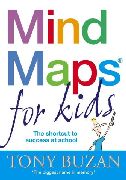 If I didn’t know better, I’d think Tony Buzan was a kid himself. He doesn’t write for kids; he speaks to them. With great respect. None of that dreary, patronising stuff fed to little minds by big egos.
If I didn’t know better, I’d think Tony Buzan was a kid himself. He doesn’t write for kids; he speaks to them. With great respect. None of that dreary, patronising stuff fed to little minds by big egos.Buzan’s Mind Maps for kids is an innovative introduction to mind mapping for the youthful uninitiated. Containing easily digestible tips for increasing motivation, enhancing memory and concentration, absorbing facts and figures and improving results, it’s a user-friendly delight.
As an educational writer, I know how tricky it is to enlighten kids without boring them to tears. Buzan uses clever gimmicks to circumvent this: memorable examples, a stimulating register, loads of white space, clever and relevant visuals, jokes and teasers, and a step-by-step guide to juggling (which warms up both sides of the brain).
Mind Maps has only two drawbacks.
One is the target audience. The book is “suitable for ages 7-14”, but it would work better for readers between 10 and 16. Particularly in the South African context. Our learners are largely unfamiliar with mind mapping and the realities of English as a second language make Mind Maps a fitting read.
The other downside is the quality of the mind maps used as examples. They’re too ‘good’. Too professional. And this could intimidate first-time mind mappers. I’d like to see real-life maps; created perhaps by the “Master Mind Mapper” kids mentioned under ‘Acknowledgments’. Crooked lines. Stick figures. Simple structures. Better for breaking down defences and creating the impression that “I could do that!”
On the whole, a superb book.
No comments:
Post a Comment